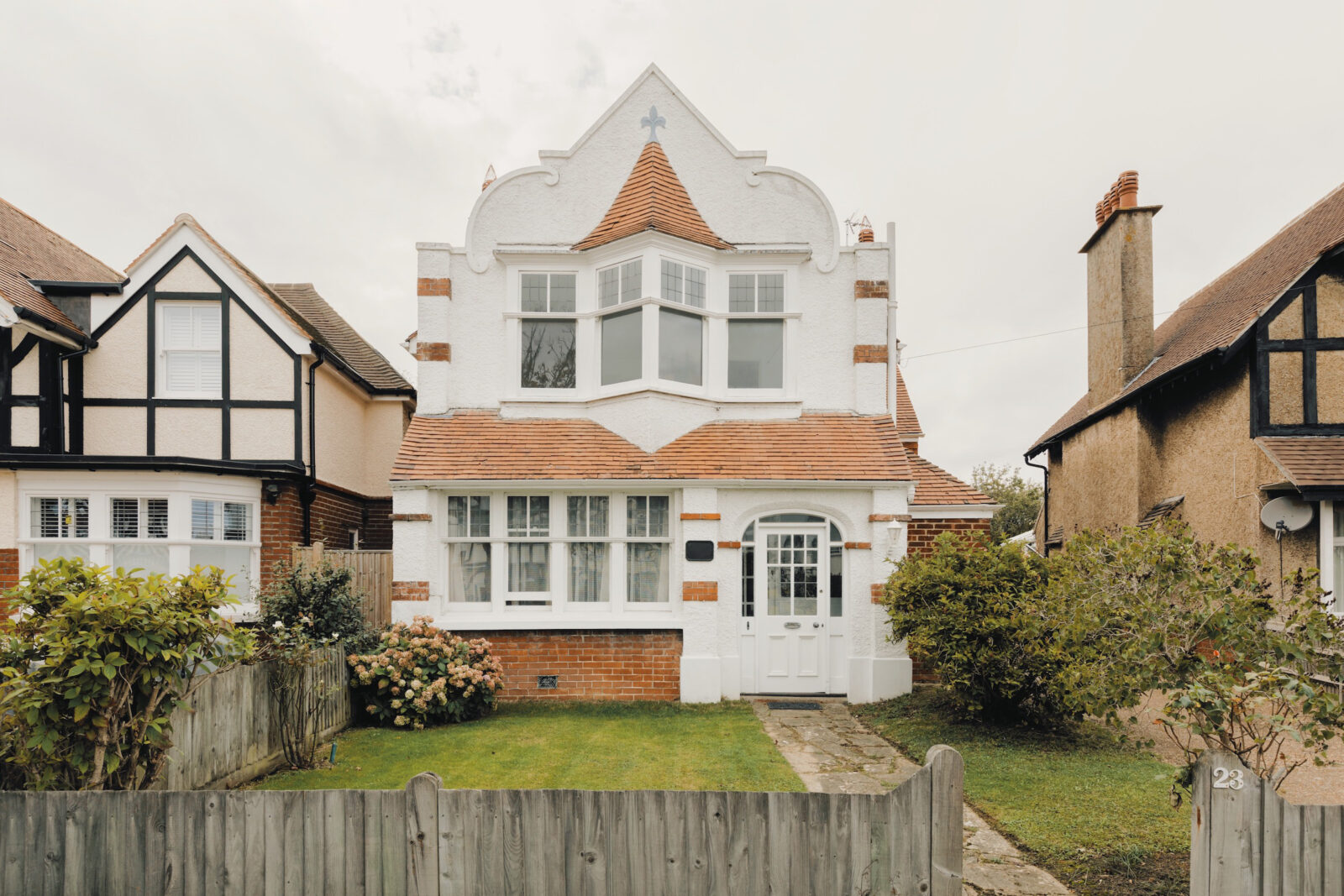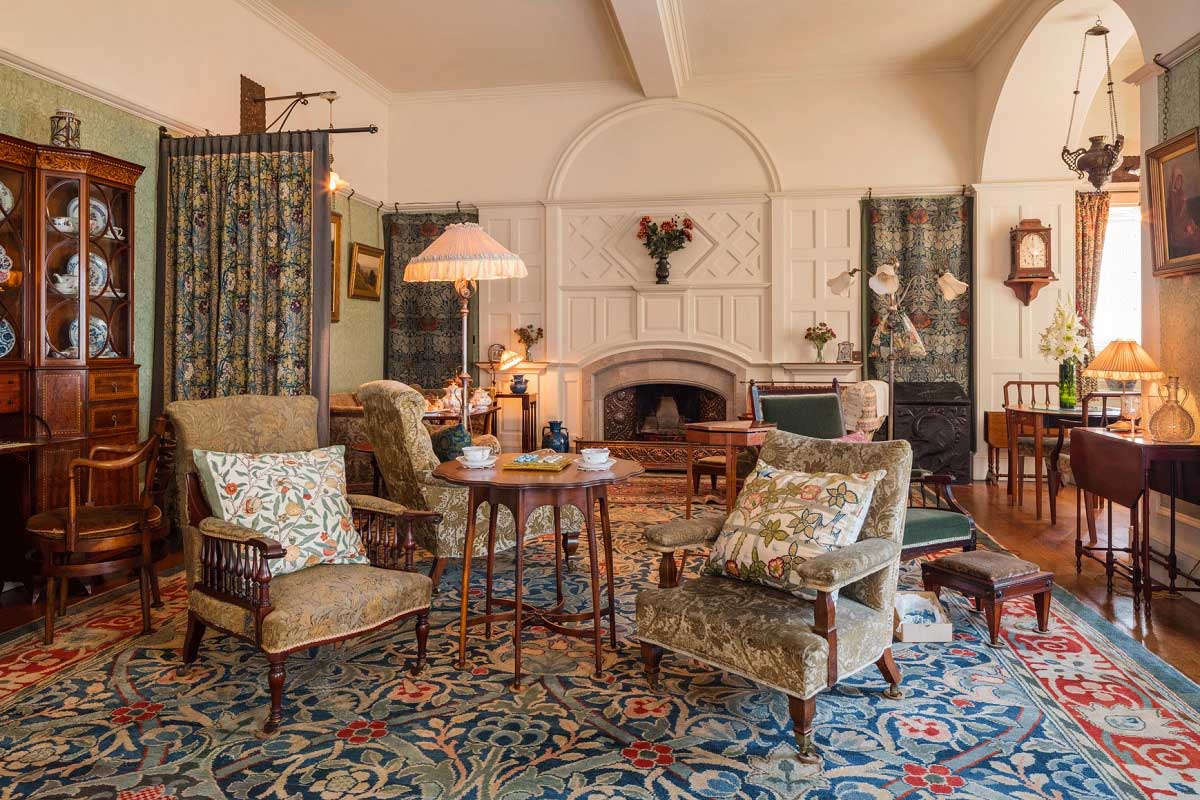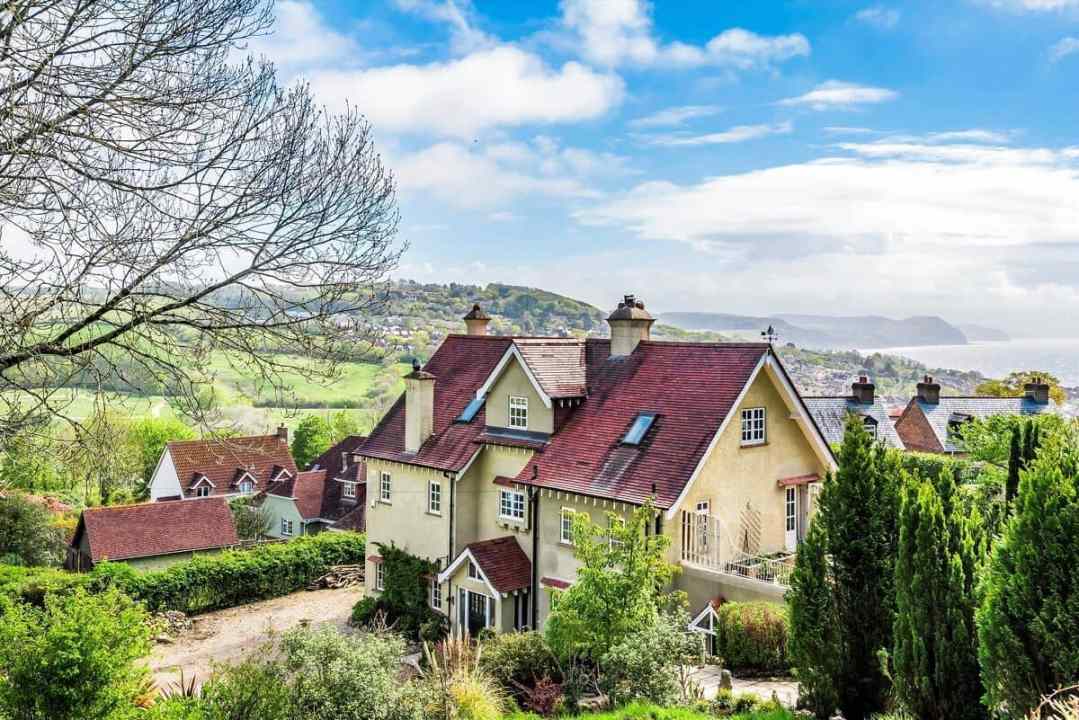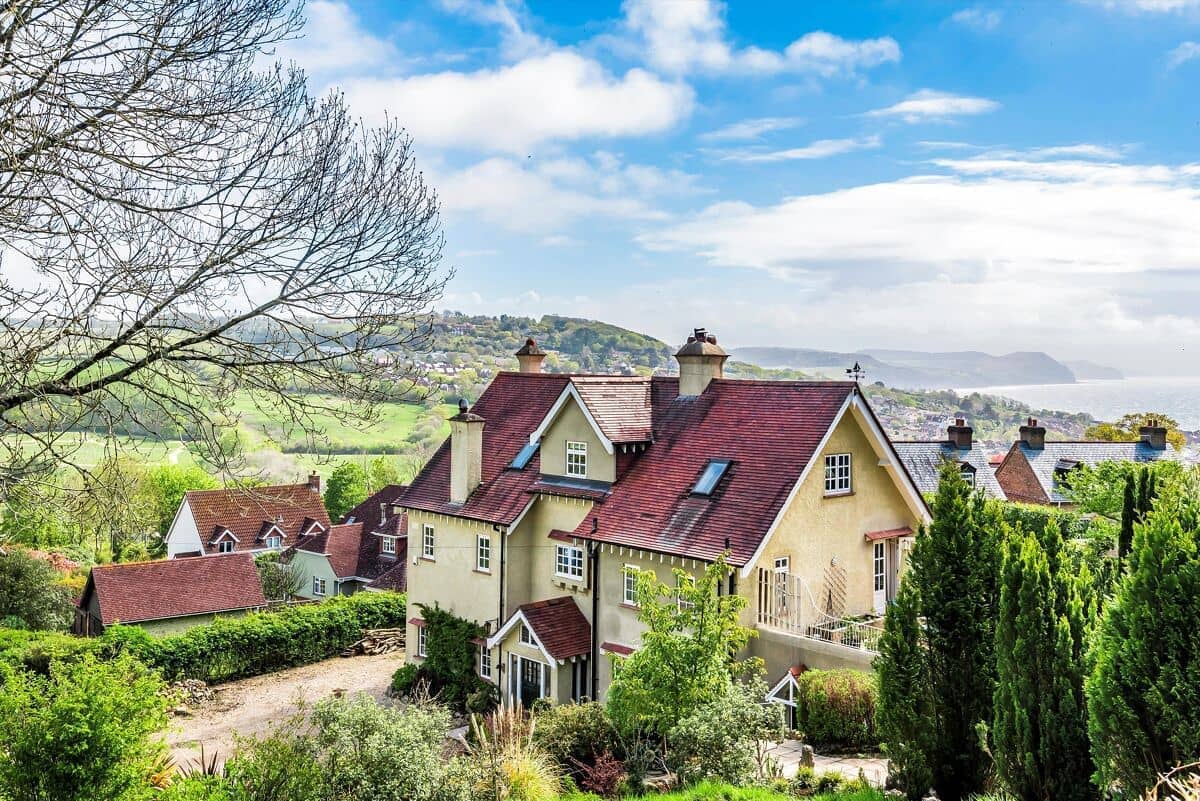When designer, poet, novelist and social activist William Morris told members of a Birmingham arts society in 1880 to ‘have nothing in your houses that you do not know to be useful, or believe to be beautiful,’ he unwittingly inspired legions of modern-day home influencers. Marie Kondo exhorts her acolytes to only own things that ‘spark joy’, minimalist Joshua Becker leads the way in radical decluttering, and Netflix star duo’s The Home Edit tames unruly celebrity spaces. But Morris, widely credited as the godfather of the Arts and Crafts movement, did it arguably more eloquently than anyone else.
In fact, Morris’s own home, the Thames-side Red House, which he co-designed in 1861 with his friend and collaborator Philip Webb – in turn known as the father of Arts and Crafts architecture – was described by pre-Raphaelite artist Dante Gabriel Rossetti as ‘more a poem than a house’. The quasi-medieval Bexleyheath building, which Morris shared with his muse and embroiderer wife Jane, was the movement’s aesthetic values made manifest, with its soaring gable roofs and oriel windows. There was a complete rejection of overly elaborate and factory-made products, with interiors decorated in jewel-bright tones, and embroidery, murals, ceramics and pared-back furniture created by the Morrises and their coterie of artist friends, which included Edward Burne-Jones.

Roused by philosopher and theorist John Ruskin’s belief that art, nature and the moral health of a society were directly linked, and that anything machine-made was distinctly dishonest, other architects, makers and artistic and crafts societies heeded the call throughout the late 19th and early 20th centuries. Household names were born and some of the UK’s most iconic houses built by the first starchitects: Ernest Barnsley’s Rodmarton Manor, in Gloucestershire, Norman Shaw’s Cragside, in Northumberland, Ernest Gimson’s Stoneywell, in Leicestershire, and Edwin Lutyens’ and Charles Voysey’s Greyfriars romantic Surrey houses. Correspondingly, star garden designers such as Gertrude Jekyll emerged, known for her dramatic yet naturalistically beautiful landscaping.
Although the style found itself phased out as the two world wars demanded more practicality, Arts and Crafts homes on both sweepingly grand scale or in cosier, more cottagey settings, continue to exert a huge influence on the homes we love – and those we are willing to pay a premium for. Those with original features such as exposed timbers and brickwork, large, heavy statement front doors, inglenook and cast-iron fireplaces, wall panelling and delicate stained glass detailing can command, says Ryan Eve, the managing director of Finestproperties.co.uk, prices of more than 10% or more on those of a similar sized home in the same neighbourhood.
Dawn Carritt, a specialist in country houses and estates for Jackson-stops.co.uk, says their appeal for buyers also lies also in their versatility, which can make them well suited to contemporary lifestyles. ‘Main reception rooms were spacious and kitchens large, with additional larders, pantries and sculleries that have often been turned into wonderful open plan kitchens/family rooms,’ Carritt says. ‘Features keen buyers should keep an eye out for when viewing an Arts and Crafts house are details such as the use of flowers or foliage, either carved in wood or moulded in plaster, which add decoration to flat surfaces.’

If you don’t have the budget for an Arts and Crafts home featuring the big name architects and horticulturalists, which can set you back tens of millions of pounds, there are plenty of other options on the market right now. Best of the pick include six-bedroom East Marches, just outside Lyme Regis, in Dorset, for sale for £1.85m. With valley and coastline views, the 3,581 sq ft house sits under a clay tile roof, was completely renovated in 2014, and has several lofty-ceilinged reception spaces and feature fireplaces.
In Farnham, Surrey, a four-bedroom, two-reception home designed by Harold Falkner – a contemporary of Lutyens and close friend of Jekyll’s – now has open-plan living space, a spiral staircase and a detached annexe, and is for sale for £1.45m. For £475,000, you can snap up a 1909 three-bedroom detached house, with a façade of dramatic Dutch gabling, on Glynde Avenue, in Eastbourne, East Sussex. It comes with its original glazed hallway, larder and tiled fireplaces.
Arts and Crafts homes’ often quirky features and listed status – sometimes making significant changes problematic – can make househunters think twice. ‘The style really is Marmite,’ says Mark Lawson, a partner at The Buying Solution which specialises in sourcing upmarket homes in London and the country. ‘Some people love them and will pay handsomely for an original, and others really dislike the distinct style. A positive is that most of the homes will stand the test of time, as they are generally solid and well built.’ For those that haven’t been converted for modern day living, their warrens of small rooms and few bathrooms can be off-putting.
If you prefer a character home that comes with a 10-year NHBC Buildmark warranty, energy-efficiency and lots of open-plan living space, Redrow’s Heritage Collection homes are the developer’s most popular. In schemes nationwide, they make a nod to Arts and Crafts using locally sourced materials, bay windows and doorway canopies. Prices start at about £360,000 for a three-bedder.
For lovers of interiors, Arts and Crafts furniture and furnishings – having fallen out of favour in the Noughties – are also definitely having a moment. ‘Much of its ethos is mirrored in today’s values when it comes to upcycling and not buying new,’ says Martin Millard, the director of Cheffins Fine Art Auctioneers. ‘We have seen an uptick in buyers at auction who are looking to avoid throwaway culture and plastic waste, which is as prevalent in the furniture industry as in any other. Industrialisation and its damaging effects frightened people in the late 19th century, as mass plastic pollution and overflowing landfill do today.’
Savvy auction hunters would do well to look out for nature-inspired Arts and Crafts tables and chairs made for Liberty & Co, the silver tableware of Robert Ashbee and the silk, linen and tweed textiles of the trailblazing Lake District entrepreneur and designer Annie Garnett. Morris & Co’s lush floral wallpaper prints are also big business, and are sandersondesigngroup.com’s bestsellers. Their most popular print is Pimpernel, dating from 1876, which Morris himself used in the dining room of his London home, the now grade II* listed Kelmscott House.
The firm’s original prints have also been picked out by on-trend production designers for big and small screen hits such as The Queen’s Gambit, I’m Thinking of Ending Things and Sex Education. It seems even the smallest dash of Arts and Crafts style will bring you bang up to date.







Comments